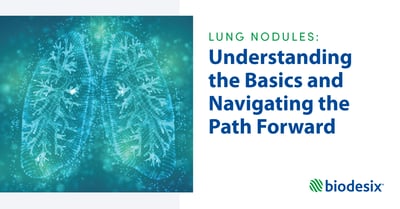Infographic: What is a Lung Nodule?
Lung nodules can be a source of anxiety for people who discover they have them. However, 95% of lung nodules are benign, meaning they aren't cancerous. Here is some information for Lung Cancer Awareness Month to help explain lung nodules.

Share this Image On Your Site
What is a Lung Nodule?
Lung nodules can be a source of anxiety for people who discover they have them. However, 95% of lung nodules are benign, meaning they aren’t cancerous. Here is some information for Lung Cancer Awareness Month to help explain lung nodules.
- Spiculated nodules have spikes or points rather than a smooth border.
- Spiculation and nodules located in the upper portion of your lungs may be associated with a higher risk.
- Part-solid nodules have a halo or non-solid border. Nodules can be solid, part solid, or entirely non-solid. The structure of the nodule helps your doctor decide what to do next.
LUNG NODULES ARE SMALL GROWTHS (Less than 30mm) IN THE LUNGS
Small nodules are more common and are often benign. Even with small nodules, your doctor may recommend you come back for a follow-up CT scan to look for changes in the nodule size or shape.
How Common are Lung Nodules?
LUNG NODULES ARE FOUND IN
- 1/3 of Chest All CT Scans
- 1/500 Chest X-rays
1.6 Million lung nodules found incidentally per year
What are the Causes of Lung Nodules?
- Inflammation from infections (tuberculosis, pneumonia)
- Inflammation from lung diseases (sarcoidosis, rheumatoid arthritis)
- Scar tissue from prior inflammation
- Abnormal tissue that could be cancer
What Does Having a Lung Nodule Mean?
Up to 95% of all lung nodules are benign (non-cancerous) and will not lead to major health problems
YOU MIGHT BE HIGHER RISK IF:
- Smoking History
- Pollution
- Age
- History of Cancer
How are Lung Nodules Assessed?
The lung nodule itself has certain characteristics that indicate the chances that it might be malignant (cancerous).
MULTIPLE OR SINGLE NODULES STRUCTURE OF THE NODULE
(solid or non-solid)
PHYSICIANS WILL ALSO CONSIDER:
- Nodule Size
- Nodule Shape
- Nodule Location
- Other health conditions
- Patient preference
What should I do if I have a Lung Nodule?
Have a discussion with your doctor to understand your level of risk of cancer and what is best for you and your family
VERY LOW RISK <5%
Follow up to look for changes to nodule
LOW TO MODERATE RISK 5-65%
More tests needed to gain more information
HIGH RISK >65%
Biopsy to look at cells within nodule
Why it Matters.
If you have a lung nodule it is important to see a specialist because if it does turn out to be cancer, early detection greatly improves survival.
5 year survival is 10 times greater with early detection
Don’t delay lung cancer screening. Even in this challenging healthcare environment, it is important to speak with your doctor and follow up with lung nodules.
Topics: infographic, lung nodule



